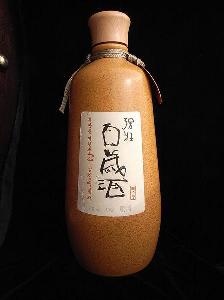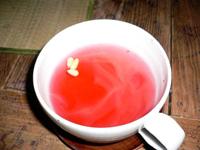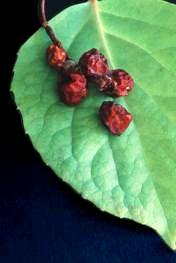In answer to a question recently posed to me by the New Belgium Brewing Company in Fort Collins, Colorado, this week’s offering on the blog is a primer on the food uses of schizandra – berries widely used in China, the Koreas and Japan for coloring and flavor in food and beverages. Schizandra berries are the fruits of the magnolia Schizandra chinensis or Schizandra sphenanthera that are widely used throughout China, Korea and Japan in traditional medicine tonics and infusions. Since 1958, when Polish scientists publishing in the Journal of Physiology (Paris) started to characterize schizandra for the west, this long-kept secret wonder of the orient has begun to be appreciated for its antioxidant, anticancer and overall health benefits as an “adaptogen” here at home.
What is less well known in the west, however, is how common an ingredient schizandra is in traditional Chinese and Korean cuisines where it is appreciated for the tangy, astringent flavor and bright red color the dried fruits offer to foods and beverages. Eaten fresh, it is called wu-wei-zi in China, which means “five-flavor fruit,” because it tantalizes the taste buds with four basic flavors—sweet, sour, salty, and bitter—plus pungency. Used for thousands of years because of its health benefits as well as its flavors it is still widely enjoyed in the east in wine, juice, tea, soup, jellies and jams and rice cakes.
 Wine and Alcohol
Wine and Alcohol
The most popular rice wine on the Korean market is a wine infused with schizandra and eleven other herbs such as ginseng, liquorice, wolfberries, astragalus, ginger, and cinnamon. Called Bek-Se Ju or Hundred-Years Wine it is thought to increase longevity. Enjoyed chilled, in a specially designed, flared glass, Bek-Se Ju is a white wine with a delightful attitude. Because of its distinct flavor, Bek-Se Ju pairs well with spicy or hot appetizers, and is refreshing with grilled or barbequed foods. In addition, there are many traditional Chinese homebrew recipes that use schizandra for flavor and color. For example:
1 ounce of dried schizandra berries
1 cup rice wine or other ethyl alcohol
¾ cup water
Combine the water and wine and then add the dried schizandra. Cover and shake well. Let sit covered for at least 1 week, shaking once a day. Strain and serve chilled.
Juices and Teas
Another traditional Korean beverage that uses schizandra for flavor and color is omija hwache, offered as a cooling welcome to guests or dining companions. One recipe is:
2 liters of water, plain or carbonated
1/4 cup of dried schizandra berries
2 cups mixed fruits (apples, nectarines, strawberries, kiwi, melons)
4 tablespoons honey
 Add schizandra berries to the water. Cover or seal and let sit overnight in the refrigerator. Stir or shake several times while the berries are steeping. When ready to serve, slice or cube fruit and mix with the schizandra water. Stir in the honey and let sit before serving cold. A traditional spring variation of this is called jindallae hwachae and has edible azalaeas taking the place of the sliced fruit in the recipe above.
Add schizandra berries to the water. Cover or seal and let sit overnight in the refrigerator. Stir or shake several times while the berries are steeping. When ready to serve, slice or cube fruit and mix with the schizandra water. Stir in the honey and let sit before serving cold. A traditional spring variation of this is called jindallae hwachae and has edible azalaeas taking the place of the sliced fruit in the recipe above.
In the United States, Chang Farm near Amherst, Massachusetts sells a schizandra-berry juice marketed as Chiberry. The beautiful rosy-colored juice is a light, tart beverage refreshing beverage that I personally enjoy (bear in mind I also love unsweetened cranberry and pomegranate juice especially if mixed with orange juice). Both Koreans and Chinese also enjoy schizandra as a tea either as a solo ingredient or mixed with other black or green tea leaves.
One recipe for plain schizandra tea is:
5 grams of dried Schizandra berries
1 liter hot water
3 tablespoons honey
Roast and crush the Schizandra berries and infuse with hot water. Wait for 3-5 minutes and then add honey to taste and serve.
Soups
In addition to using schizandra in beverages, the Chinese and Koreans also use it to flavor and color soups. A traditional Cantonese recipe for it that can be found in the cookbook “A Tradition of Soup” by Teresa Chen and Martin Yan calls for:
2 ounces schizandra seeds
1 cup rock crystal sugar
1 teaspoon pinenuts (whole or ground)
4 cups plain rice soup *
Soak the schizandra in 2 cups of water for 8-12 hours. Strain the liquid through a cheesecloth or fine strainer and set aside. Dissolve the sugar in 1 cup of water. Stir in the schizandra liquid until evenly mixed. Pour the sweetened schizandra liquid into the plain rice soup. Add pinenuts and stir well. Serve hot or warm.
Variation: Use hot, sweet schizandra broth to make noodles
* Plain rice soup is made by bringing about 3 quarts of water to a boil. Adding 1 cup of long or short grain rice and stirring well. Bring the rice back to a boil and cook over high heat for 30 minutes stirring occasionally. Reduce heat to medium-low and cook uncovered for 2 hours – stirring occasionally.
Rice Cakes
Schizandra berries are also commonly used in traditional, sweet, pan-fried Korean rice cakes called juak as stuffing along with other fruits such as jujubes, wolfberries and nuts such as ginko or chestnuts or sesame seeds. One recipe for pan-fried rice cakes is:
2 cups glutinous rice powder
Water to moisten
2 cups jujubes
½ cup schizandra berries (fresh or dried and soaked in water)
½ cup chestnuts, roasted and grated or finely diced
4 tablespoons light sesame oil or other nut-oil for cooking
½ cup honey
Pound and roll jujubes until they form a sheet of fruit. Add water to rice powder to make a sticky dough. Knead dough for 3-5 minutes, then break off pieces and flatten into discs about 2-3 inches in diameter. Place a piece of the jujube roll onto one of the rice disks. Then add 2 schizandra berries and top with grated chestnuts. Top with a second rice disk and seal tightly with your fingers.
Heat oil in a sauté pan and sauté rice cake for 3 minutes per side. When done, remove from pan and drain on paper towels. Top with a dollop of honey and more nuts or seeds if desired. Let drain and rest before serving at room temperature.
Once again the line between food and medicine is blurred with schizandra, and once again the west is finally catching up with good science to support the traditional use of this fruit. In recent years, antimicrobial substances have been identified in the fruit and it has been found to increase the bioavailability of several classes of drugs – including those that reduce rejection in transplant recipients. There are other, darker potential uses of the berry which cannot be discussed here, but suffice it to say the proof is in the decocting time and temperature. So, if you venture into making your own schizandra foods or beverages, respect it, and – don’t cook it too long or at too high a heat. (Words by Laura Kelley)

